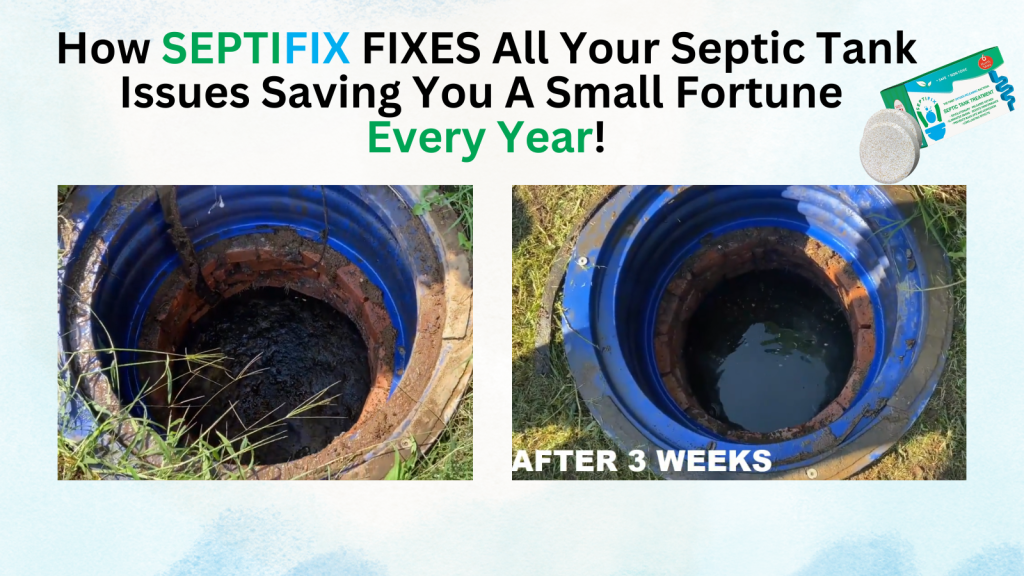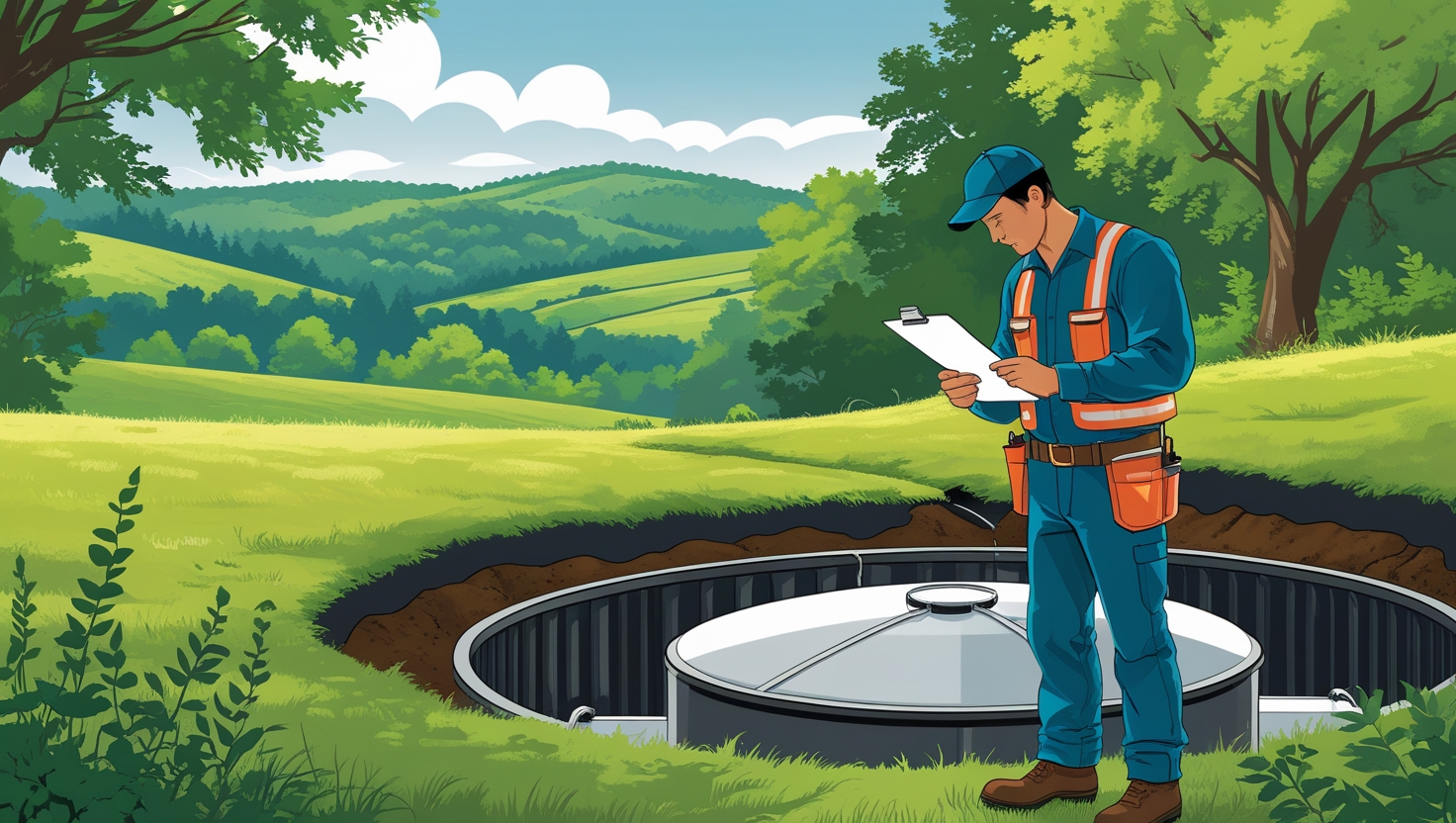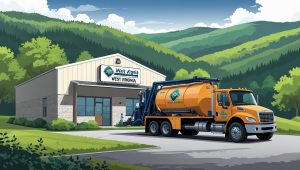If you own property in the Mountain State, understanding West Virginia septic tank regulations is essential. Septic systems—also known as onsite wastewater systems, private sewage systems, or individual sewer units—are widely used across rural and suburban areas. Staying compliant with state and local codes protects not only your property but also the environment and public health. This guide explains the key regulations, permit processes, and maintenance standards you need to follow as a septic system owner in West Virginia.
Table of Content
- Understanding Septic Systems in West Virginia
- Why Septic Regulations Matter in West Virginia
- Permit Requirements for Septic Systems
- Inspection and Pumping Guidelines
- Approved Septic System Types in West Virginia
- Special Considerations for Properties Near Water
- Local Health Departments by County
- Failing Systems and Reporting Obligations
- Septifix
- Septic Permit Links by State
- Septic Permit Links by State
Understanding Septic Systems in West Virginia
In West Virginia, a septic system refers to any subsurface wastewater treatment system installed on private property. These systems typically treat and dispose of household sewage onsite, making them vital in areas without access to centralized sewer lines.
Article: DIY Septic Pumping: Can You Do It?
You’ll often hear septic systems referred to as decentralized wastewater systems or small flow sewage treatment systems, particularly in regulatory documents. Moreover, whether you’re building a home or upgrading your current setup, understanding the correct terminology is essential when applying for permits or communicating with local health officials.
Why Septic Regulations Matter in West Virginia
West Virginia’s rolling landscape and water-rich terrain make wastewater management a top concern. Poorly maintained systems can pollute groundwater, rivers, and streams—jeopardizing the environment and public health. State laws, enforced by the West Virginia Department of Health and Human Resources (WVDHHR) and local health departments, exist to:
- Prevent contamination of drinking water
- Minimize the risk of sewage-borne diseases
- Ensure proper design and function of treatment systems
- Protect the environment from nutrient overload
Ignoring or violating these regulations can lead to hefty fines, forced repairs, or even legal action.
Permit Requirements for Septic Systems
New System Installation
Before installing a new septic system, homeowners must first secure a permit from the Local Health Department, under the oversight of WVDHHR. In addition, the permitting process includes:
- Soil percolation testing to assess drainage
- Site evaluation to determine suitable system type
- Submission of a detailed system design plan
- Payment of applicable fees
These steps ensure that the system is safe, environmentally sound, and tailored to your property’s characteristics.
Article: What Are Eco-Friendly Septic Solutions?
Repairs and Replacements
Any significant repair or replacement of your existing septic system—such as tank replacement or drainfield reconstruction—requires a new permit. However, minor maintenance like baffle repair may not need prior approval, but always confirm with your local sanitarian.
Inspection and Pumping Guidelines
Inspection Schedule
Routine inspections are crucial to prevent system failures. West Virginia encourages inspections:
- Every 3 years for conventional systems
- Annually for aerobic treatment units (ATUs) or advanced systems
Inspections must be conducted by licensed septic professionals or registered sanitarians. In fact, inspections help identify issues like sludge buildup, broken components, or root intrusion before they become costly problems.
Pumping Requirements
There’s no fixed law stating how often you must pump your tank. However, WVDHHR recommends pumping every 3 to 5 years depending on:
- Tank size
- Household size
- Water usage habits
Neglecting pumping can lead to backups, leachfield damage, and even contamination of nearby wells or streams.
Approved Septic System Types in West Virginia
The state allows various septic system configurations depending on site conditions. These include:
- Conventional gravity-fed systems: Most common and cost-effective
- Pressure distribution systems: For locations with challenging topography
- Mound systems: Elevated designs for areas with poor soil percolation
- Aerobic treatment units (ATUs): Often used where conventional systems are unsuitable
Alternative systems must be approved by the local health department and installed by certified professionals.
Special Considerations for Properties Near Water
Homes near wetlands, rivers, or flood-prone zones face stricter regulations. WVDHHR mandates:
- Minimum setbacks (usually 50–100 feet) from any water body
- Elevated or lined systems in high water table areas
- Enhanced inspection frequency
These measures help prevent surface water pollution and protect aquatic ecosystems from nitrogen and phosphorus overload.
Local Health Departments by County
eptic regulations can vary slightly by county jurisdiction, particularly in regions with sensitive watersheds. For example, in some counties, additional setbacks or advanced treatment systems may be required to protect nearby water sources.
- Jefferson County requires more rigorous soil testing.
- Kanawha County mandates engineered plans for all new installs.
- Greenbrier County enforces stricter rules near karst terrain.
Always contact your county health department for specific rules, forms, and inspection schedules.
Failing Systems and Reporting Obligations
Septic system failure is a public health concern. You must report a failing system if, for example:
- Sewage surfaces above ground
- Plumbing backs up regularly
- Grass above the tank is soggy or unusually lush
- Strong sewage odors are present
Contact your local sanitarian immediately. The system will likely need repair or full replacement, and a new permit may be required.
Contact Info and Resources
- WV Department of Health and Human Resources: dhhr.wv.gov
- Septic System Application Forms: Available via your local health department
- Environmental Protection Agency Septic Resources: epa.gov/septic
- West Virginia University Extension – Wastewater Info: extension.wvu.edu
These sources offer forms, approved system lists, and maintenance guides.
Conclusion
Navigating West Virginia septic tank regulations doesn’t have to be overwhelming. Therefore, by understanding the permitting process, following inspection schedules, and using approved system types, you can keep your system compliant and your property safe.
Septifix

Directory | West Virginia Septic Service Providers : Best Professionals
Winter Pumping: Should You or Shouldn’t You?
Septic Installer Registration in Bay County, Michigan
Sustainable Materials for Septic Systems: Eco-Friendly Solutions
DIY Septic Tank Installation: A Complete Guide for Homeowners
Directory | Washington Septic Service Providers | Part 2
Directory | Washington Septic Service Providers | Part 1
DIY Repairs Are Always Cheaper
Septic Permit Links by State
Septic Permit Links by State
West Virginia septic permit, WV onsite sewage rules, septic inspection West Virginia, septic system types WV, WV home wastewater









